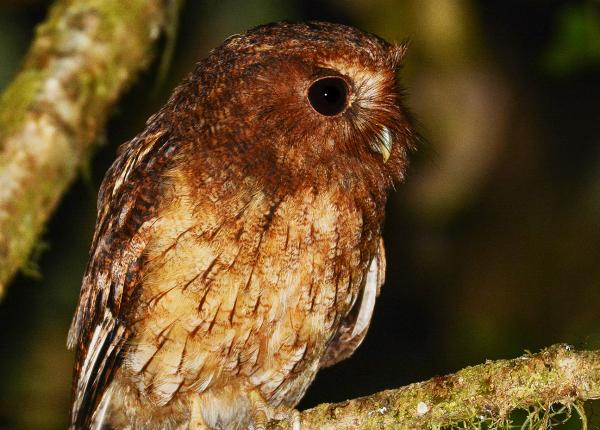How The Peregrine Fund is Helping
Though The Peregrine Fund doesn't work directly with Rufescent Screech-owl, our efforts in scientific research, habitat conservation, education, and community development help conserve raptors around the world. We also supply literature to researchers from our avian research library, which helps scientists the world over gather and share important information on raptor conservation.
Where They Live
The Rufescent Screech-owl is a mid to high-elevation species. It is found in parts of South America including Colombia, Venezuela, Ecuador, Peru, and Bolivia. It is a denizen of the Andes Mountains.
If you were to search for this species, there would actually be a wide range of habitats you could look in. Montane evergreen forest, secondary forest, and even forest edges and shrub lands are all places this species can be found. Some researchers have even found this species hanging out in lone trees in open fields and pastures.
What They Do
The Rufescent Screech-owl is nocturnal, meaning it is most active at night. Outside of breeding season, it is usually quite solitary, hanging out on its own .
Why They Need our Help
Though the Rufescent Screech-owl is categorized as a species of Least Concern, its populations do appear to be declining. To make matters worse, so little is known about this species, that it is hard to determine exactly how its populations are holding up and what might need to be done to help them in the future. Unfortunately, this owl is vulnerable to loss of habitat, mainly deforestation.
What They Eat
Very little is known about how this small owl catches its prey, what prey it catches, and how much prey it will consume on average. Though we don't know for sure, it is likely that this species' diet is made up mostly of large insects, spiders, and small vertebrates.
Nests, Eggs, and Young
It might surprise you to learn that virtually nothing is known about the breeding biology of this small owl! It most likely nests in tree cavities, but little other information exists. How many eggs does the female lay? How long do they need to be incubated for? How old are the owlets when they fly for the first time? How long do they remain in their parents' territory? All of these are questions that we still need answers for.
Rufescent Screech-owl and the World Center for Birds of Prey
The World Center for Birds of Prey offers fun ways to learn about birds of prey. Interactive activities, tours, interesting videos and a children's room with activities from coloring sheets to quizzes to costumes and a touch table are available for the curious mind. It is a great place to learn about owls. Wild Barn Owls can sometimes be seen in the area. And we have several Avian Ambassador owls!
Come meet Rusty, our Eastern Screech-owl, and Winston, our Western Screech-owl. Or Wally. These avian ambassadors are often out greeting visitors during bird presentations and sit comfortably on their handlers' gloves, which allows you to get a close up view of these exceptionally cute raptors.
References:
Marín-Gómez, O. H., D. W. Holt, R. Berkley, C. Deppe, P. L. Enríquez, J. L. Petersen, J. L. Rangel Salazar, K. P. Segars, K. L. Wood, and J. S. Marks (2020). Rufescent Screech-Owl (Megascops ingens), version 1.0. In Birds of the World (S. M. Billerman, B. K. Keeney, P. G. Rodewald, and T. S. Schulenberg, Editors). Cornell Lab of Ornithology, Ithaca, NY, USA. https://doi.org/10.2173/bow.rufsco1.01









